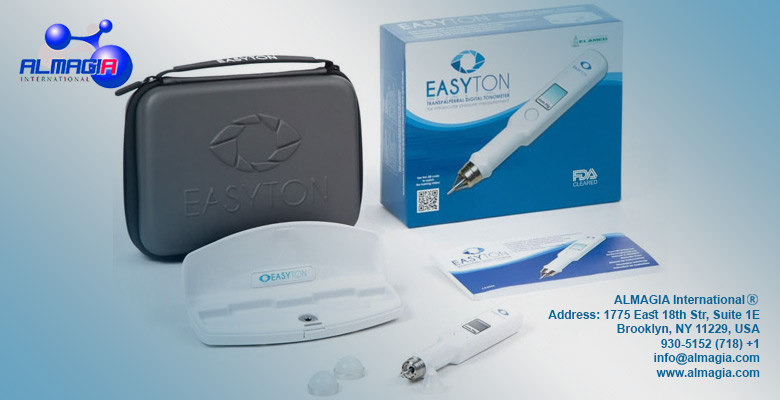Ophthalmologists assess numerous elements of eyesight and eye health during an annual eye exam, including intraocular eye pressure. Eye physicians take measurements because high pressure in the eyes, also known as ocular hypertension, can affect the optic nerve and result in lifelong vision loss.
Eye pressure may be measured in various ways, each of which is a type of tonometry. Tonometer Eye Pressure Device works best for eye pressure measurement. The most well-known is non-contact or air-puff tonometry, which involves blowing a puff of air into the eye. After all, read further to learn more.
Table of Contents
Facts About Normal Eye Pressure
The majority of the water in our eyes is called the vitreous humor. Another fluid, aqueous humor is found in the front of the eye, right behind the cornea. As the aqueous fluid drains from the eye, it is replaced by fresh aqueous humor in equal proportions.
Aqueous humor outflow and refill are equal and consistent in healthy eyes with appropriate intraocular pressure (IOP). The normal eye pressure is 12 and 21 mmHg (millimeters of mercury).
Above 21 mmHg, the optic nerve may be damaged, resulting in permanent vision loss.
How Is It Measured?
Eye pressure is usually measured during regular or urgent eye exams, but it can also be done in an emergency department or primary care doctor’s office following an eye injury.
· To relax your eyes, eye drops are used.
· The doctor or assistant then uses a device that uses a blue light to lightly touch the front surface of your eye, applying a little amount of pressure to the eye.
· The ophthalmologist measures the pressure inside each eye.
The Goldmann applanation tonometry test is the most popular form of tonometry test. Using a flat-tipped probe gently placed against the front of your eye is long regarded as the gold standard of eye pressure examinations.
Further,ELAMED Easytone Tonometer has got FDA clearance for measuring eye pressure. This is a transpalpebral digital tonometer for intraocular pressure measurement (IOP), used on both adults and children.
It comes with a pen-like instrument with a stainless steel tip that allows the user to touch the lid at the sclera, just above the corneal edge. This device is essential for patients who cannot open their eyes or have had past eye surgery.
Causes of Elevated Eye Pressure
Intraocular eye pressure rises when too much aqueous humor is generated. When the aqueous humor does not drain properly, the pressure might increase.
Increased eye pressure can occur in patients with eye diseases, including pigment dispersion syndrome and a few others that restrict or delay aqueous fluid outflow. These individuals’ ocular pressure should be checked regularly during routine eye exams.
Eye damage or injury can also dangerously raise eye pressure.
Certain medicines, notable steroids, can also induce elevated ocular pressure. As a result, everyone who has had an eye injury or is on steroids should have their eye pressure examined.
Treatment for Eye Pressure
To assist in reducing and normalizing eye pressure, pharmacologic and nonpharmacologic methods are available. Your healthcare professional will assess all treatment choices following a thorough eye exam and medical history review.
Eye pressure medicines have adverse effects and can interact with other medications. As a result, taking any medicines as directed is essential, and talking to your doctor about any current medications, vitamins, or supplements.
The most commonly prescribed eye drops for normalizing eye pressure are:
· Beta-adrenergic blocking agents
· Topical carbonic anhydrase inhibitors (dorzolamide, brinzolamide)
· α2 adrenoceptor agonist (Brimonidine)
· Cholinergic agonists (pilocarpine)
· Prostaglandins (latanoprost, unoprostone isopropyl, travoprost)
· Prostamide (bimatoprost)
· Combination medication drops (Cosopt, Combigan, Simbrinza)
If eye drops are ineffective, your health professional may prescribe oral drugs to reduce eye pressure by decreasing the quantity of fluid produced in the eye. Carbonic anhydrase inhibitors such as acetazolamide and methazolamide are often used.
These people may also benefit from glaucoma surgery. This approach will assist in bringing IOP down to normal but will not prevent it from climbing again. Eye surgery should not be undertaken carelessly only after careful thinking and open conversation with a trained eye surgeon.
Non-pharmacologic treatments will not normalize eye pressure, but they are helpful in conjunction with pharmacologic approaches. These treatments are currently not FDA approved for excessive eye pressure and should only be used after consulting with your doctor.
Complementary treatments should never be used as a substitute for prescription drugs. These are some of the possibilities:
· Homeopathic remedies
· Diet changes, including decreasing caffeine intake
· Physical exercise
· Bilberry extract supplements
· Herbal supplements
· Osteopathy
· Vitamin C supplements
· Physiotherapy
· Elevate the head of the bed while sleeping
Conclusion
This is all about eye pressure measurement. An eye care specialist uses the right treatment option to measure a patient’s eye pressure. They may use a tonometer for the same. Almagia International has FDA-approved Tonometer Eye Pressure Device that helps patients enjoy better lives by improving their eyesight. Visit the official website to learn more.

